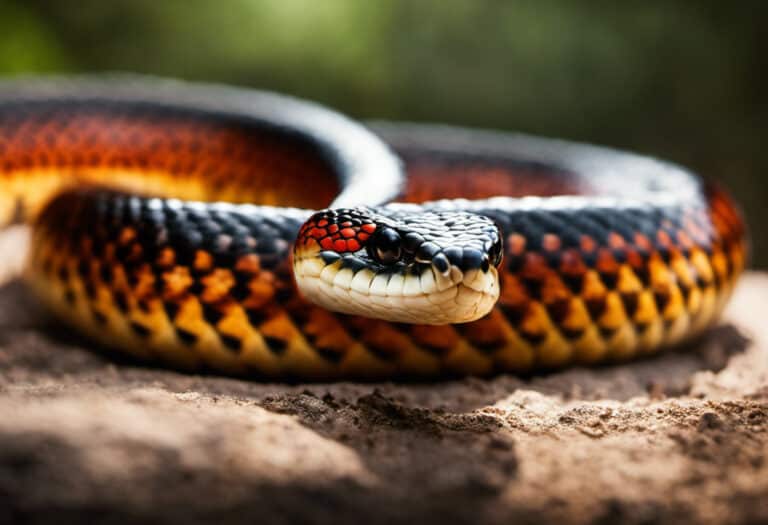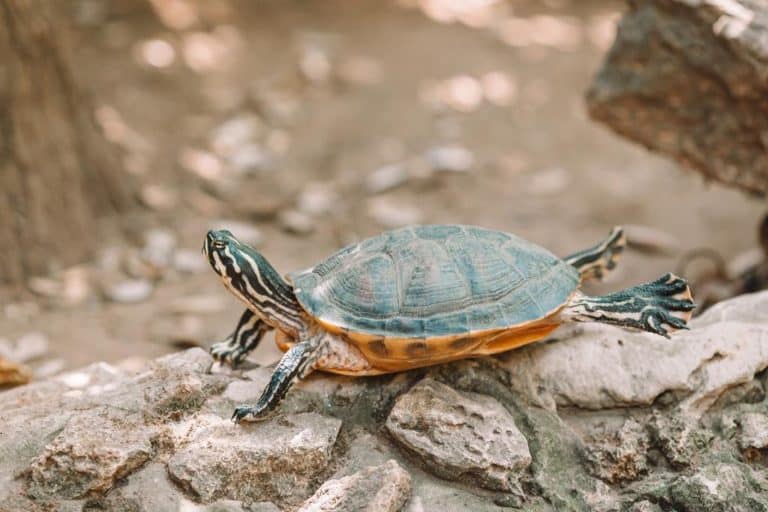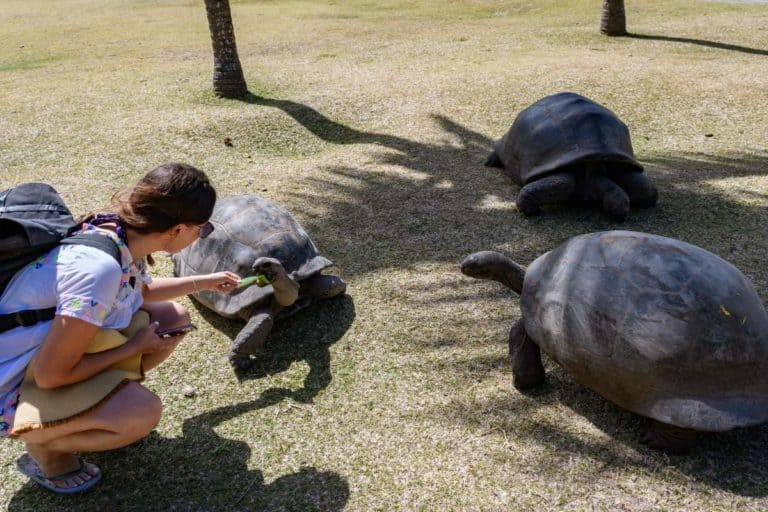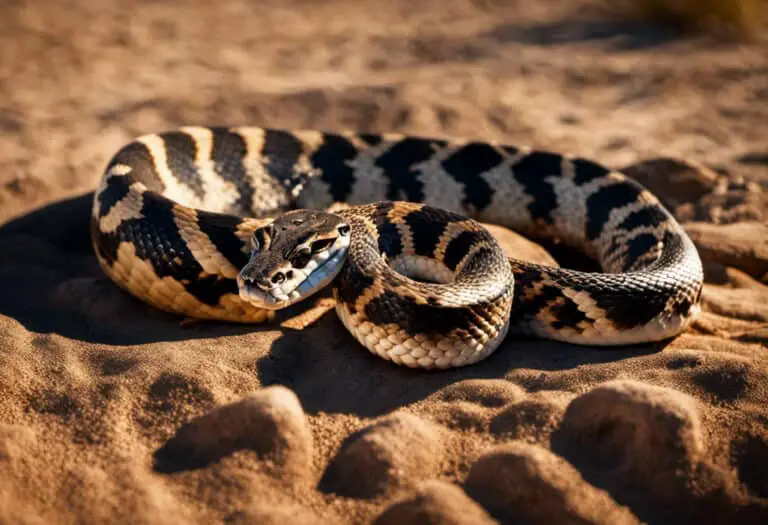Why are Turtles Slow? Get The Facts!
Turtles have short, strong front legs and long, weak back legs. That means when turtles run, their solid front legs give them power while their long back legs get dragged along behind. This makes them slow runners.
Turtles are sort of trapped in their own design. They can’t change it because that’s just how their bodies are built.
Turtles use their strong beaks to eat aquatic plants and their front legs to steer and propel themselves. Water also aids turtles in conserving energy by allowing them to swim more efficiently. As a result, once a turtle is submerged, its powerful front limbs are free to move quickly!
Turtles are essentially helpless on land. They must drag their cumbersome shells about and need their back legs for support and assist them in climbing. When a turtle runs on the ground, its back legs can’t be utilized for power. The heavy shell and bulky back legs make for a slow, cumbersome runner.
Are turtles Slow on Land and Fast on Water?
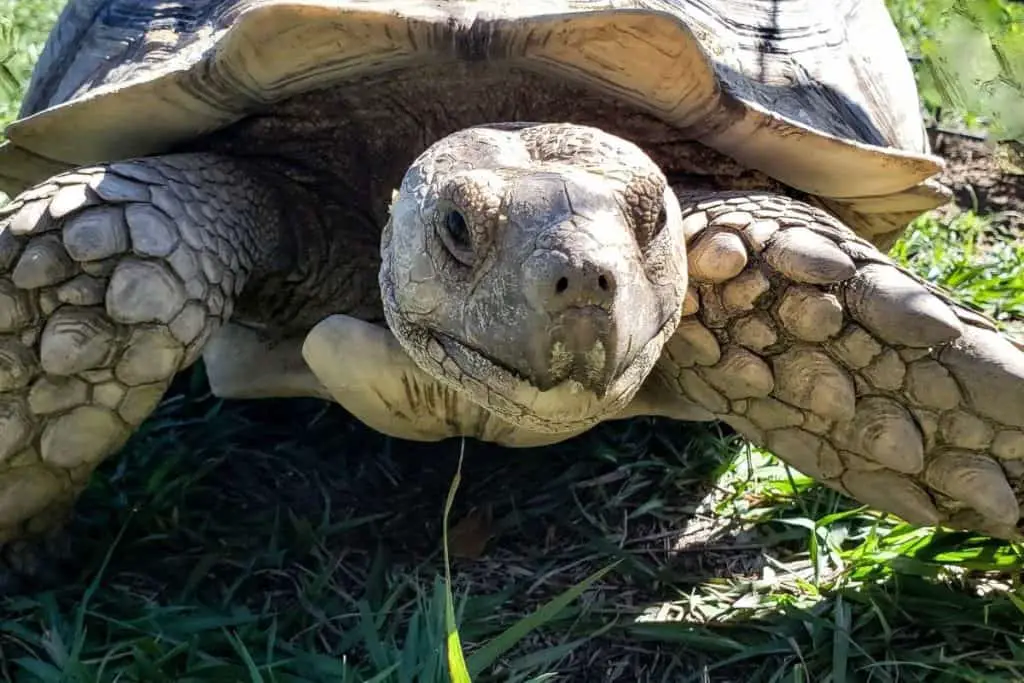
Turtles are considered to be slow on land and fast in the water.
Turtles are more agile in the water than on land. While they can swim very fast, their cumbersome shells and ungainly back legs make them less efficient runners on the ground.
Turtles usually prefer to avoid humans and live far out at sea or in quiet waters. They can often be found on beaches and mudflats, where they feed on jellyfish, mollusks, and aquatic plants.
Since turtles are slow on land, they have become easy prey for humans. Their eggs are harvested delicately, while the adults are hunted for their meat and shells, dried to make ornaments.
Turtles are under threat of extinction due to the many perils they face. Turtles require wide-open spaces, free of predators and poachers, for them to live healthy lives. Their slow speed makes it very difficult to escape from these dangers.
How fast can Turtles run?
It depends on the species. Like Painted Turtles or Red-Eared Sliders, smaller turtles can run faster than larger ones like Snapping Turtles.
I’ve seen reports that Painted Turtles can run at about 1.5 feet per second, but the highest speed I found in the literature review is 2 feet per second for Red-Eared Sliders.
However, turtles rarely run to escape predators. When they do run, it’s typically very brief, usually under one second. Turtles are likely to instead walk or swim away.
Can Turtles Swim?
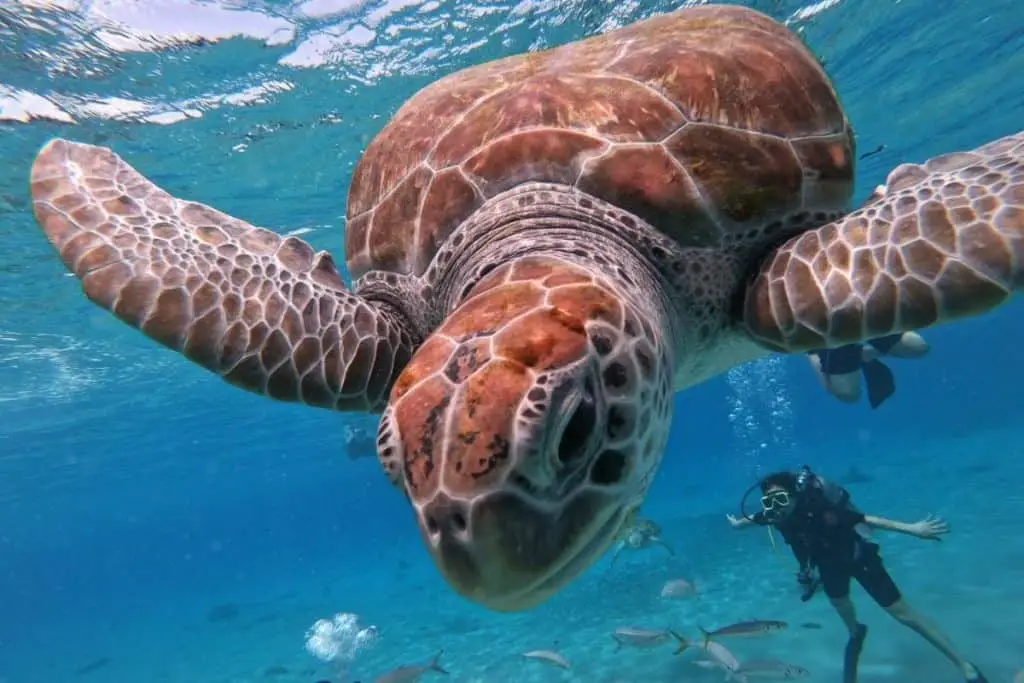
Yes, and a few are remarkably Like escaping danger. The leatherback sea turtle can swim up to 22 miles per hour for short distances.
However, turtles are not adapted for long periods of vigorous activity and must often rest after traveling only short distances. Their ability to hold their breath allows them to survive without oxygen for several hours.
While most turtles swim less efficiently than fish, they paddle with their front limbs while fish use their tails (caudal fins).
Of course, if the water is deep enough and there are no threats in sight, swimming is probably a turtle’s preferred escape strategy. Turtles can also remain submerged underwater for quite some time to avoid danger.
Can Turtles Climb?
Turtles cannot climb trees or anything else. Their shells make it difficult for them to even get up by pushing with their front legs, and the weight of the cover prevents them from getting good traction on flat surfaces like tree trunks. They can clamber along mounds of sand or over rocks, but this is slow and inefficient.
Most turtles can’t climb because of their flat undersides and heavy, cumbersome shells. However, some water-dwelling species like sea turtles may sometimes use their flippers to crawl on beaches or rocks to rest or nest.
How far can a Turtle travel?
This depends on the species, life stage, time of year, and other factors. Some turtles are migratory while others are not. Some spend most of their lives in the water, while others live almost entirely on land.
Here’s one example: Leatherback Turtles often migrate more than 10,000 miles every year. But this is unusual for an adult.
Most turtles migrate much shorter distances as they grow up and spend more time in the water than on land as adults.
When do Turtles run?
Turtles generally don’t run very much. We have to go to unusual places, like the beach in the middle of summer when Leatherback Turtles lay their eggs in nests dug into the sand, to find them running.
So, why do turtles sometimes run? One reason is that they are scared. It’s not surprising that a turtle might want to escape from something that’s trying to eat it.
They can hide in water and use camouflage, but they’re still vulnerable to other animals like birds and raccoons that don’t need water to survive.
Another reason turtles run is because of the time of year.
Turtles breed when the weather is warmer, typically laying their eggs on land during summer. But they don’t lay eggs every day.
So, when the turtles are laying eggs, they walk around on land more than usual and sometimes run if an animal threatens them.
Why are turtles slower than other animals?
We studied turtles in the same way we studied elephants, chimpanzees, and other essential animals for humans. So, it’s not surprising that turtles are slower than our pets or farmed animals like cows and pigs.
The fastest land animals can run about 45 mph in short bursts. For example, the cheetah is the world’s fastest land animal at 65-70 mph.
For comparison, turtles can manage about 3/4 mph for brief periods.
So, turtles can run as fast as we walk and sometimes even quicker. But they don’t need to because they often move much slower than this to get around.
Unlike us, they live primarily in water instead of on land. So, they can use water to escape from predators and other animals in the same way we use cars and houses instead of running away.
Turtles evolved from animals that lived on land and went back into the water about 200 million years ago. They took their flippers with them gradually became more extended, more robust, and more flexible.
The ancestors of modern turtles kept their flippers even though they evolved into almost entirely aquatic animals. As a result, turtle legs look similar to these flippers because the same bones were used for walking on land and swimming in water.
Land animals are faster than aquatic animals because they don’t have to fight water resistance. All animal bodies are different, but larger bodies tend to be slower because of the friction caused by their muscles.
This is why the tiniest ants can run fast enough to escape cats while elephants can barely walk without collapsing from exhaustion.
